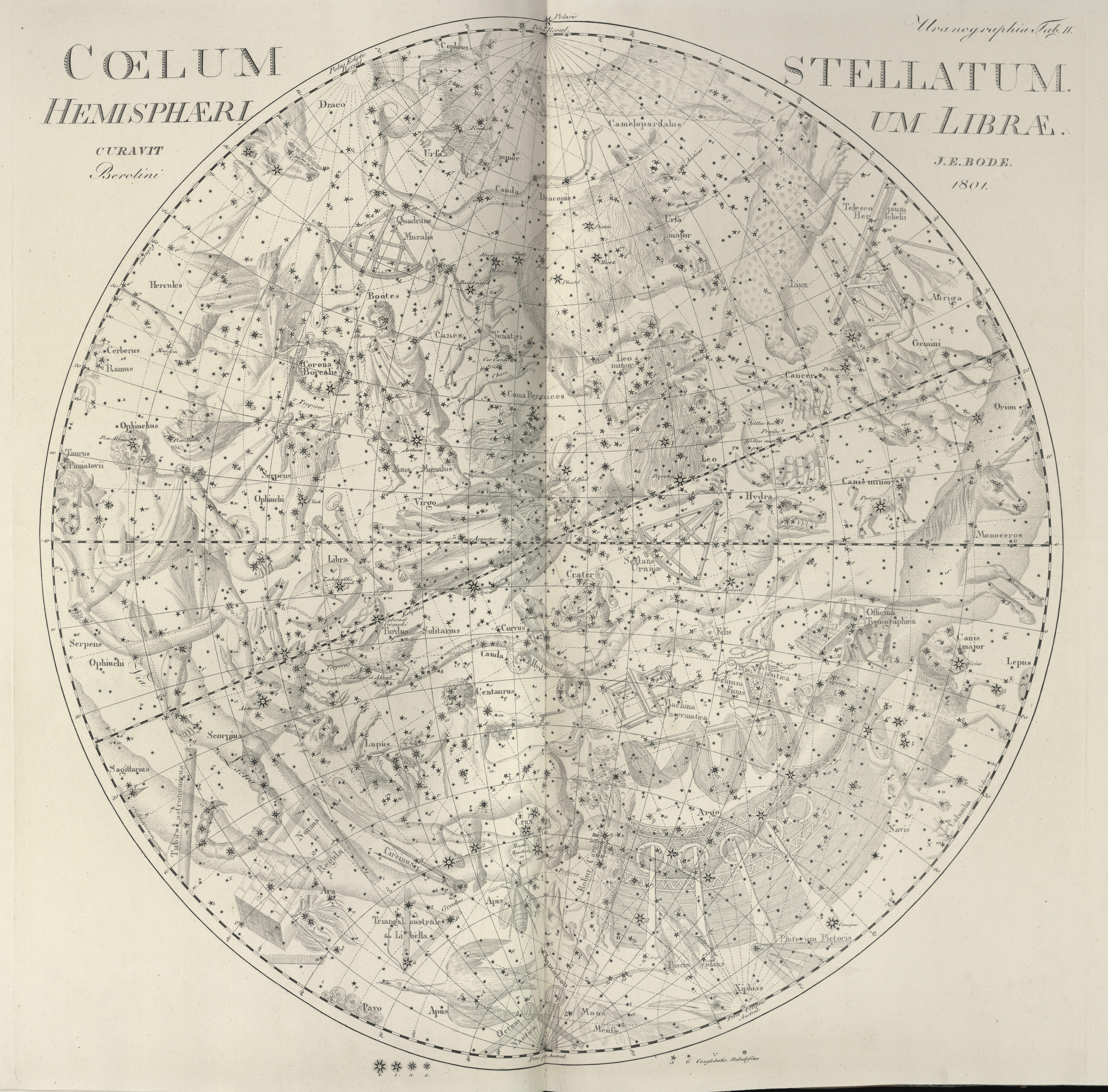Men - Mensa the Mesa or Table Mountain
- IAU Constellation79 of 88Astronomical Regions
Dor - Dorado the Swordfish
IAU ConstellationSize
72 of 88Astronomical RegionsIntro and Visual description
Dorado the Swordfish is a small and obscure but very interesting constellation. It contains the Large Magellenic Cloud (LMC) and the only recent naked-eye supernova. In addition, the south ecliptic pole is located about where the "eye" of the fish would be. The Large and Small Magellenic Clouds are bright enough to be visible even in Moonlight.
Hyi - Hydrus the Southern Water Snake
IAU ConstellationSize
61 of 88Astronomical RegionsIntro and Visual description
Hydrus has only three stars above the fourth magnitude.Hydrus is the Little Snake, not to be confused with Hydra, the big one.
Men - Mensa the Mesa or Table Mountain
IAU ConstellationSize
75 of 88Astronomical RegionsOct - Octans the Octant
IAU ConstellationSize
50 of 88Astronomical RegionsIntro and Visual description
Octans the Octant is devoid of bright stars, but three faint stars (not numbered by brightness) make a small triangle.
The south celestial pole actually lies within Octans. No RA (visible anytime).
The nearest easy-to-spot star to the south pole is Beta-Hydri in Hydrus the Little Snake. No brighter star than Achernar (alpha-Eridani) is closer to the south celestial pole, which lies midway between Achernar (Eridanus) and Crux.
Nubecula Major the Large Magellenic Cloud
Asterism Visual Appearance
Located between: Hydrus, Mons Mensae, Reticulus, Dorado the Swordfish (Xiphias).
Asterism Origin and History
The Large and Small Magellenic clouds (LMC and SMC) are satellite galaxies bubbled off of the Milky Way like spray from a fountain. However, some astronomers consider them galaxies in their own right (the LMC has a degree of spiral structure). These bright regions of light, observed by Ferdinand Magellan in 1519 and by other early explorers like Amerigo Vespucci and Marco Polo, are also known as Cape Clouds.
The LMC (166,000 LY away) lies almost between Canopus and the south pole, or on a line from Sirius through Canopus. The LMC contains the Tarantula Nebula.
The SMC (slightly farther than the LMC) lies almost between Achernar and the south pole in the constellation Tucana the Toucan.
On February 23-24 in 1987 the Large Magellenic Cloud was the site of Supernova 1987A. It "went off like a firecracker" and was observed by two astronomers at a remote mountain observatory near Las Campanas, Chile (29 degrees south latitude). Ian Shelton and Oscar Duhalde both observed this new star flare up only 4 degrees from the south ecliptic pole. At maximum intensity three months later the supernova was at magnitude 2.8, about the same brightness as the fourth brightest star of Crux. Then it grew redder, and by the end of the year diminished to the threshold of naked-eye visibility.
Supernova 1987A was the first naked-eye supernova in or near our galaxy since the invention of the telescope. The last two were Kepler’s Supernova, which appeared in Ophiuchus in 1604, and Tycho’s Star, which appeared in Cassiopeia in 1572. Tycho’s Star was visible for 16 months, and at its brightest could be seen in full daylight. The Crab Nebula in Taurus is believed by many to be the result of a supernova in 1054.
Bode (1801), plate 2: Libra Planisphere
Uranographia Tab II. Stellatum Hemisphaeri um Librae.
Bode included two planisphere plates. They are not southern and northern hemispheres; each one has Polaris at the top and the south pole at the bottom. Each one is centered upon an equinox point (where the ecliptic or path of the Sun and the celestial equator intersect). The March equinox point was in Aries in antiquity; by Bode’s time, due to the precession of the equinoxes, it had shifted to Pisces. The September equinox point was in Libra in antiquity; by Bode’s time it had shifted to Virgo. Bode titled the plates as the Aries and Libra planispheres.
The Libra planisphere, centered on the September equinox in Virgo, includes these constellations, among others, which appear high overhead in the night skies of spring:
Equatorial: Ophiuchus, Serpens, Libra, Virgo, Crater, Corvis, Hydra, Sextans, Leo, Cancer, Monoceros.
Northern: Hercules, Quadrans Muralis, Bootes, Canes Venatici, Ursa Major, Telescopium Herschelii, Gemini, Lynx, Ursa Minor.
Southern: Scorpius, Tubus Astronomicus, Lupus, Centaurus, Apis, Chameleon, Crux, Argo Navis, Robur Caroli II, Circinus (sector compass), Canis Major, Pixis Nautica (magnetic compass), Machina Pneumatica (air pump), Officina Typographica (printing press).
In September, the Libra-Virgo equinox (the center of the Libra plate) is traveling with the Sun, rising in the east in the morning and setting in the west in the evening. Imagine the center of the planisphere has the Sun pinned to it for that day, and that’s how it would move across the sky. Therefore the constellations near the center of this planisphere are invisible in the daytime sky at that time unless there is a solar eclipse. They would be visible directly opposite the Sun at the March equinox.
IAU Constellation Main Page
Tau - Taurus the Bull
Size
Intro and Visual description
Taurus the Bull is easily spotted. Its head is the Hyades, a V-shaped cluster of stars. His horns point outward from the V. Aldebaran is the red eye of the Bull as he charges down upon us.


